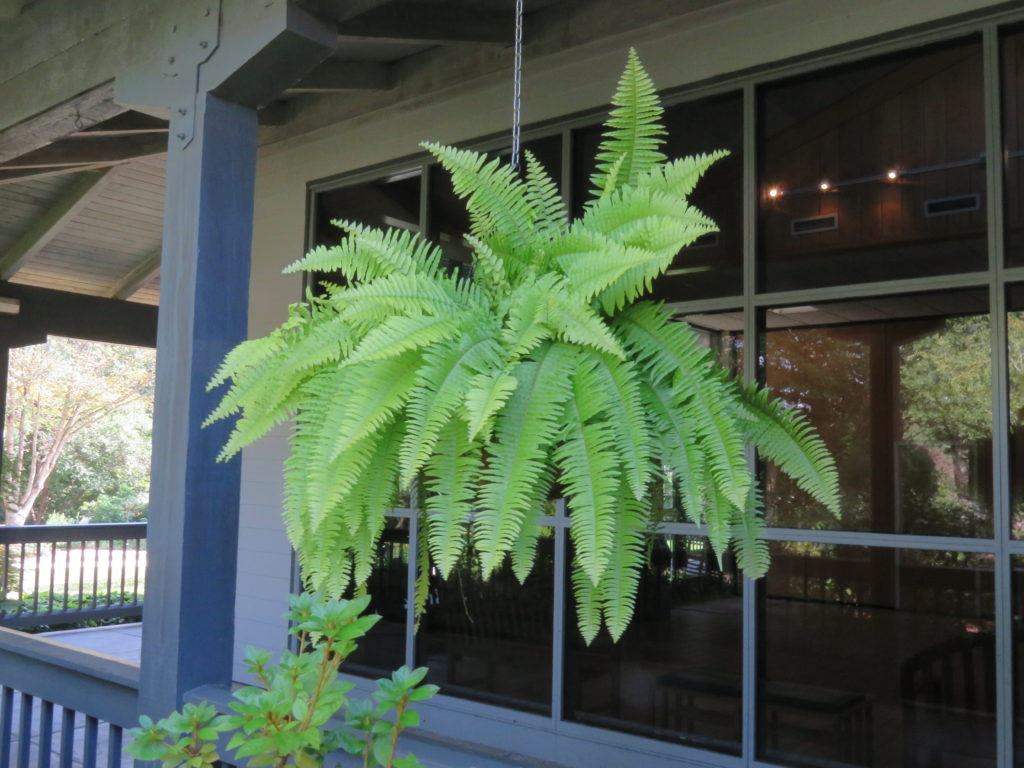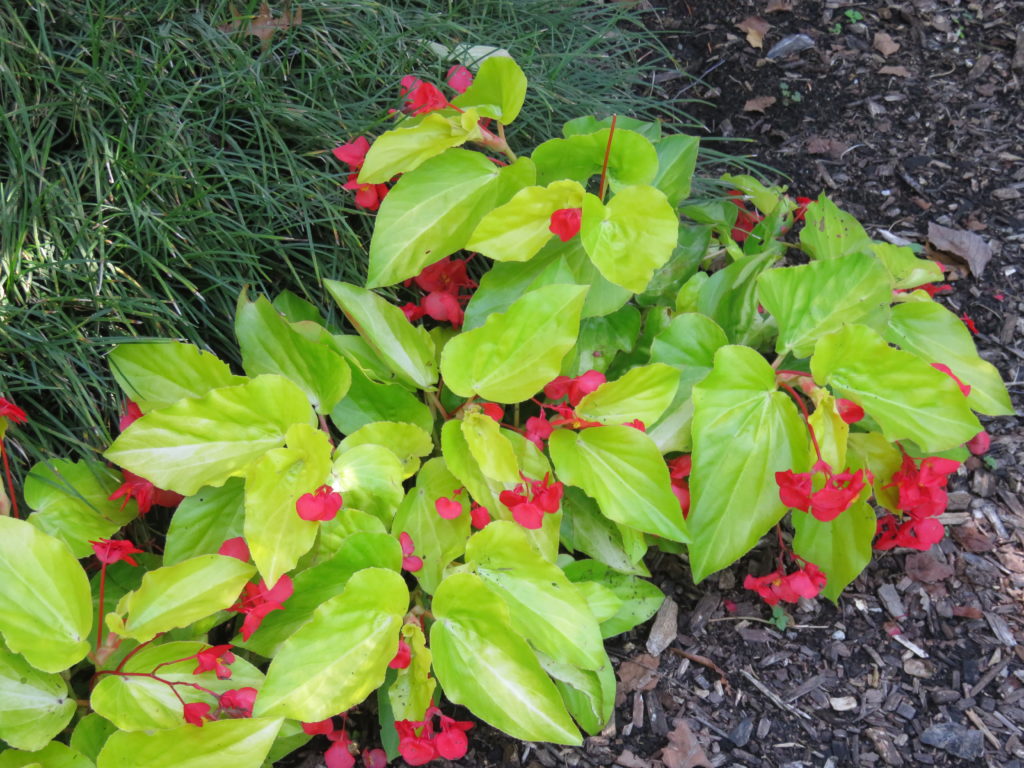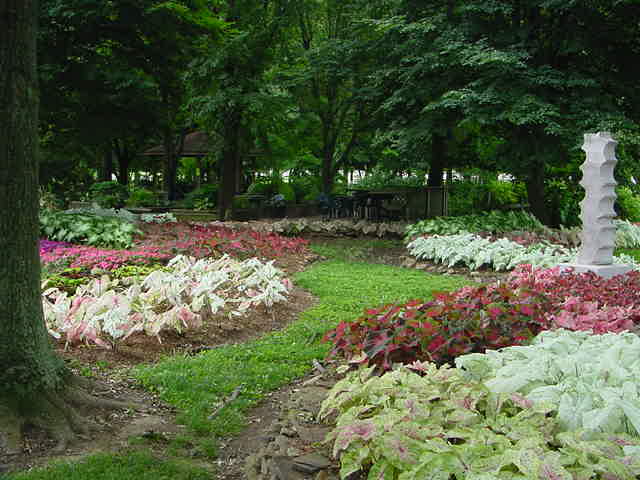
1. Boston fern (Nephrolepis exaltata) are excellent shade plants, traditionally planted in hanging baskets and window boxes. Asparagus fern (Asparagus springeri) is also nice additions to shady areas.

2. Coleus (Solenostemon) are known for their colorful foliage is nice in a pot or around trees or shrubs. For moderately shady areas, select the Mosaic™ or Kong™ series.
3. Begonias as a group represent lots of variety series. Most garden begonia varieties should do well in beds, planters and pots. Begonia types like the Rex and Angel Wing are grown primarily for colorful foliage and secondarily for flowers.
4. Impatiens are not just for shady garden spots anymore. Choose hybrid disease resistant varieties such as Sunpatiens, New Guinea, and Beacon ™ (NEW in 2020) impatiens are full of bigger showy blooms and perform best in partially shaded areas.

5. Caladium are non-hardy tubers are often started indoors in late winter to extend their outdoor season. They are grown for their colorful tropical foliage which brightens up shady areas.
6. Fuchsias are readily identifiable by their drooping, brightly colored flowers that bloom most of the summer. Select the trailing habit which promise excellent flowering in beds or hanging baskets.
7. Wishbone flower (Torenia fournieri) bloom from late spring into early autumn. Summer Wave® and Clown series are current favorites; tolerant of heat, heavy rains, and occasionally dry soils. Plants usually get about 6 inches tall and can trail up to 30 inches.
8. Polka-dot plant (Hypoestes phyllostachya) grow 1-3 feet high with purple-green leaves that are ornately speckled in shades of pink and white leaves; these tropical, colorful shade plants thrive in hot and humid conditions; polka-dot plant is moderately drought tolerant. Seed series: Confetti™; Splash™.
Growing Tips: All eight shade annuals look great in the front of landscape beds or in large patio containers and hanging baskets. Plants are set in mid-spring when threats of frost have left the area. All prefer moist fertile loamy soil, and partial shade area. They tolerate heat and humidity and perform poorly in either full day sun or deep shade.

 Posted in
Posted in 
